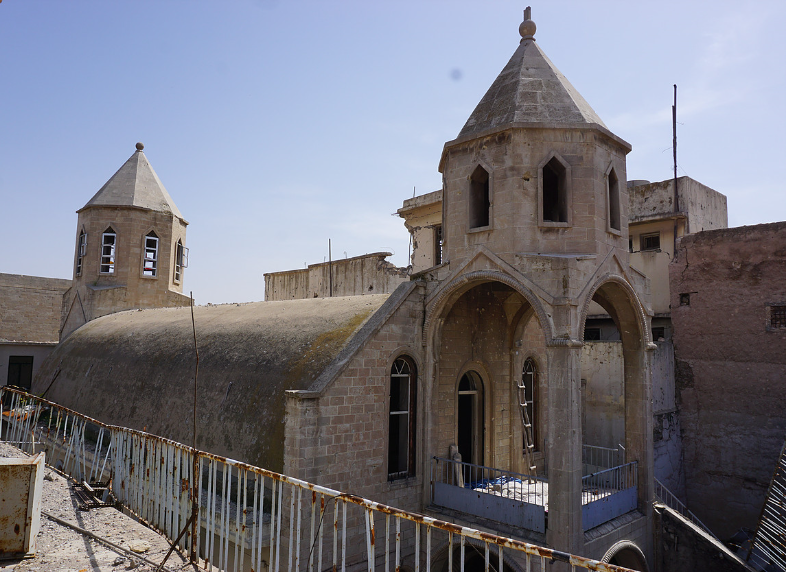“One story of Mosul today can be told through a church in ancient Mosul that was once used by ISIS,” begins a photo essay by Mosul journalist Ali Y. Al-Baroodi.
Al-Baroodi, a photographer and translator based in Mosul, has been documenting the destruction and recovery of his home city.
His footage of the Armenian Orthodox Church of Our Lady, in the Maydan part of the city, one of the oldest districts in Mosul, near, he says, to where ISIS made its last stand last year.
“ISIS used this church after capturing the city in June 2014. It was a headquarters of the Hisbah, the notorious morality police. It was also used as a place where people were lashed for breaking ISIS laws, such as shaving their beards, watching TV, singing or having long trousers.”

In the grounds of the church, his footage shows piles of satellite channel receivers and dishes confiscated by IS to isolate and control residents with the territory it had seized. On a door is graffiti with messages such as: “Women don’t have access here” and “Islamic State property”.
Inside the church, which is badly damaged, marked with bullet holes and strewn with rubbish, he says: “Here is another church, another beautiful one, damaged, but not at least, demolished.” He notes food packaging discarded while locals were “starving”.
The footage is published by the US-based Middle East Center for Reporting and Analysis.
While thousands of Christian families have begun to return to their homes in the Nineveh Plains surrounding Mosul, few have returned to homes in the city itself, fearing unexploded IEDs or the possibility of ongoing hostility from their neighbours, despite the military defeat of IS.